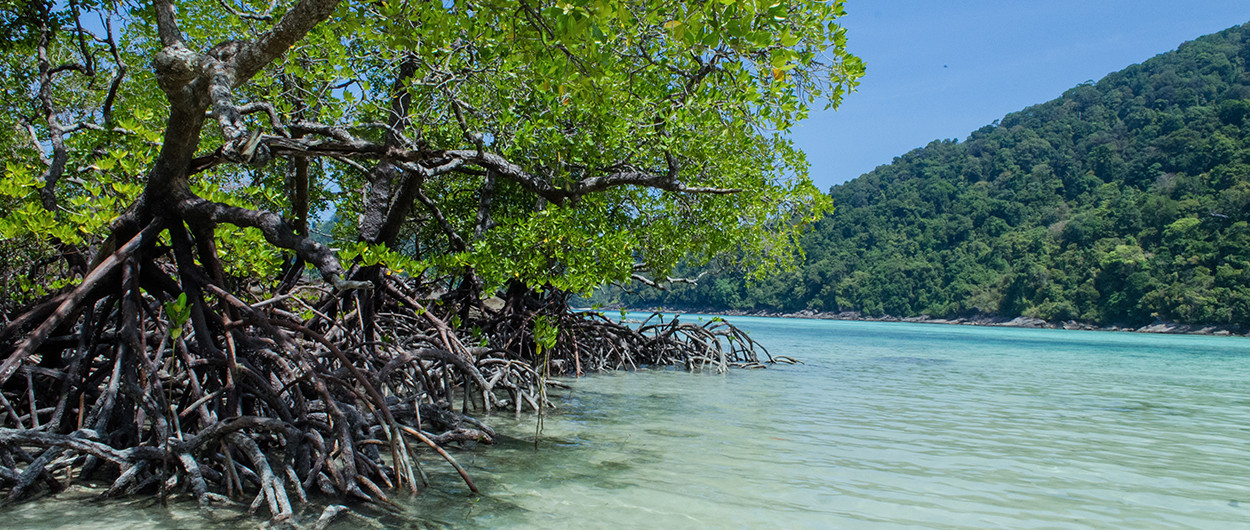Late awareness to a major environmental crisis
According to a survey commissioned in 2022 by the French Biodiversity Agency, eight French persons out of 10 believe that the state of biodiversity affects them, and 94% of them believe it is important, if not crucial, to rally to protect and restore biodiversity. A similarly high percentage is found on a European scale: within the European Union, 95% of persons surveyed believe that halting biodiversity loss is crucial to combating climate change and necessary for long-term economic development.
What is the current state of biodiversity?
Biodiversity is declining at an alarming rate. In recent years, many scientific studies have demonstrated the extent and speed of this phenomenon.
The Intergovernmental Science Policy Platform on Biodiversity and Ecosystem Services (IPBES) showed in 2019 that biodiversity was disappearing at an appalling rate. At least 1 million animal species are threatened with extinction on a planet three quarters of whose land surface and two thirds of is oceans have been altered significantly by mankind. Shortly thereafter, in 2020, the World Wide Fund for Nature (WWF) found that populations of wild animals had diminished by 68% since 1970. So, there are three times fewer wild animals on the planet as in 1970, and things continue to get worse. A scientific consensus has taken shape according to which the world is facing a sixth massive extinction of species.
What is biodiversity?
Ecosystems are “a dynamic complex of plant, animal and micro-organism communities and their non-living environment interacting as a functional unit”.
Why this sudden and massive collapse?
According to the scientific community and research by IPBES, human activities are the main cause. Whereas the global population has doubled in the past 50 years, economic growth has increased global GDP five-fold. Technical progress and economic growth have considerably reduced the number of persons living in extreme poverty. This progress has been backed by a rapid increase in agricultural and industrial output and by urbanisation. Within 50 years, global livestock has expanded by 50%, to more than 1.5 billion head of cattle in 2020. Global steel output has tripled – in 2020 to almost 2 billion tonnes of raw steel.
This growth has come with numerous impacts on the environment. We are all facing the reality of climate change. In 2021, the average warming of the atmosphere exceeded 1.1°C since the dawn of the industrial era, causing a multiplication of extreme climatic phenomena. This climate crisis, combined with other factors of stress on species and natural habitats, has caused the biodiversity crisis.
What are the five main factors in the loss of biodiversity?
According to the IPBES they are, in decreasing order of importance:
- The conversion of natural land and sea habitats for agriculture, urbanisation, new infrastructures, etc.
- The direct exploitation of species, including unsustainable forestry, fishing, hunting, etc.
- Climate change.
- Pollution.
- The introduction and spread of non-native invasive species.
How is the biodiversity crisis recognisable?
These economic consequences show why, since 2020, the loss of biodiversity has been among the risk factors for society and the economy, alongside climate change and extreme climatic phenomena, according to the World Economic Forum’s annual survey of political decision-makers and corporate managers. Beyond a purely ecological issue, this poses risks to economic actors:
- Physical risks, arising from the dependence of value chains on biodiversity and ecosystemic services;
- Transition risks, arising from economic, societal, regulatory and social developments resulting from the biodiversity crisis;
- Systemic risks, arising from the impact of the biodiversity crisis on economic and societal resilience.
This typology is consistent with the typology of climate change risks. It is clear that these phenomena are mutually reinforced components of the same ecological crisis.
Political and institutional action must be strengthened
In June 1992, the Earth Summit held by the United Nations Environment Program in Rio de Janeiro led to the adoption of several conventions, including the United Nations Framework Convention on Climate Change and the Convention on Biological Diversity (CBD). This agreement already recognised the importance of biodiversity for society, and its deterioration due to human activities.
A milestone in recognition marked at COP15
Thirty years later, at COP15 of the CBD, held in December 2022 in Montreal, CBD signatory-countries recognised the dramatic worsening of the biodiversity crisis and the failure to take action to remedy it. The global annual budget for protecting and restoring biodiversity is estimated at less than 143 billion dollars, vs. estimated needs of more than 700 billion dollars annually, while public subsidies and investments in activities contributing to the loss of biodiversity amount to thousands of billions of dollars.
COP15 of the Convention on Biological Diversity featured the active participation of coalitions of companies and financial institutions, many of whom were present in Montreal to stress the importance of finding a solution to the biodiversity crisis in order to ensure the resilience of the economy and society.
A global biodiversity framework as a catalyst for action
COP15 concluded with an ambitious agreement, the Kunming-Montréal Global Biodiversity Framework. This framework is regarded by many as the biodiversity equivalent of the Paris climate agreement, promoting, among other things, the “30 by 30” objective, meaning protecting 30% of the world’s biodiversity-sensitive land and marine areas by 2030, restoring 30% of degraded land, and significantly reducing the risk of species extinction). The agreement is backed by a series of concrete measures to achieve a world in which “by 2050, biodiversity is valued, conserved, restored and wisely used, maintaining ecosystem services, sustaining a healthy planet and delivering benefits essential for all humankind”.
There are two channels for implementing the Global Biodiversity Framework:
- All CBD signatory-countries have pledged to update and release their National Biodiversity Strategy, in order to transpose it into public policy and regulation, thus stimulating an environmental transition at the national and international levels.
- All society's stakeholders, including companies, financial institutions, and consumers, are asked to help reach targets and objectives via their strategic, commercial and personal choices, hence supporting a gradual transformation of the economy that reconciles economic and social development, protection and restoration of biodiversity, and ecosystemic services.
What is the Convention on Biological Diversity?
- Preservation of biological diversity.
- Sustainable use of biological diversity.
- A fair and equitable sharing of benefits arising from the use of genetic resources.
What goals are being set for COP16?
COP16 is meant to serve as a forum for sharing know-how on the strategies and solutions that companies and financial institutions can put to work to reduce their risk exposure and multiply the opportunities for investing in the protection and restoration of biodiversity.
Follow Camille Maclet on LinkedIn
Camille Maclet is a sustainability professional with specific interest in financing nature conservation and restoration. In January 2024, he joined BNP Paribas as a Biodiversity Specialist in the Group CSR Department.
sources
- Insect decline in the Anthropocene: Death by a thousand cuts | PNAS
- Will Humans Survive the Sixth Great Extinction? (nationalgeographic.com)
- Global GDP over the long run (ourworldindata.org)
- Number of cattle, 1970 to 2020 (ourworldindata.org)
- 2021 World Steel in Figures
- Four Key Climate Change Indicators Break Records in 2021
- Observatoire des forêts françaises (ign.fr)
- The World's Fourth Mass Coral Bleaching Event Is Underway—and It Could Become the Worst One Yet | Smithsonian (smithsonianmag.com)
- Global Deforestation Rates & Statistics by Country | GFW (globalforestwatch.org)
- Plastics and Biodiversity | Plastics and the Environment Series – Geneva Environment Network
- Home | Global Action on Pollination Services for Sustainable Agriculture | Food and Agriculture Organization of the United Nations (fao.org)
- A Healthy Ocean Depends on Sustainably Managed Fisheries (nature.org)
- Nature Risk Rising: Why the Crisis Engulfing Nature Matters for Business and the Economy | World Economic Forum (weforum.org)
- A “Silent Spring” for the Financial System? Exploring Biodiversity-Related Financial Risks in France | Publications (banque-france.fr)
- How much are invasive species costing us? | CNRS



